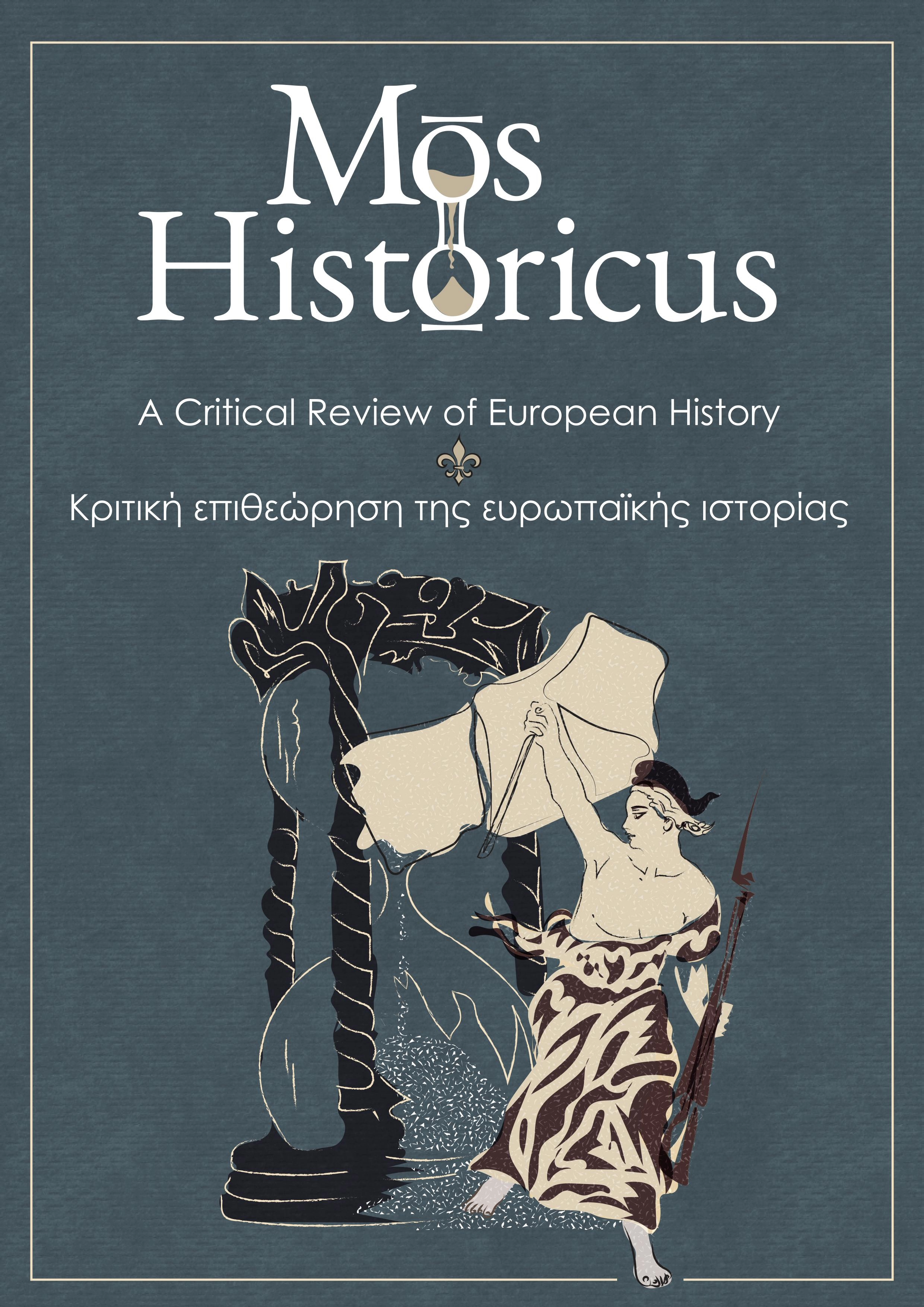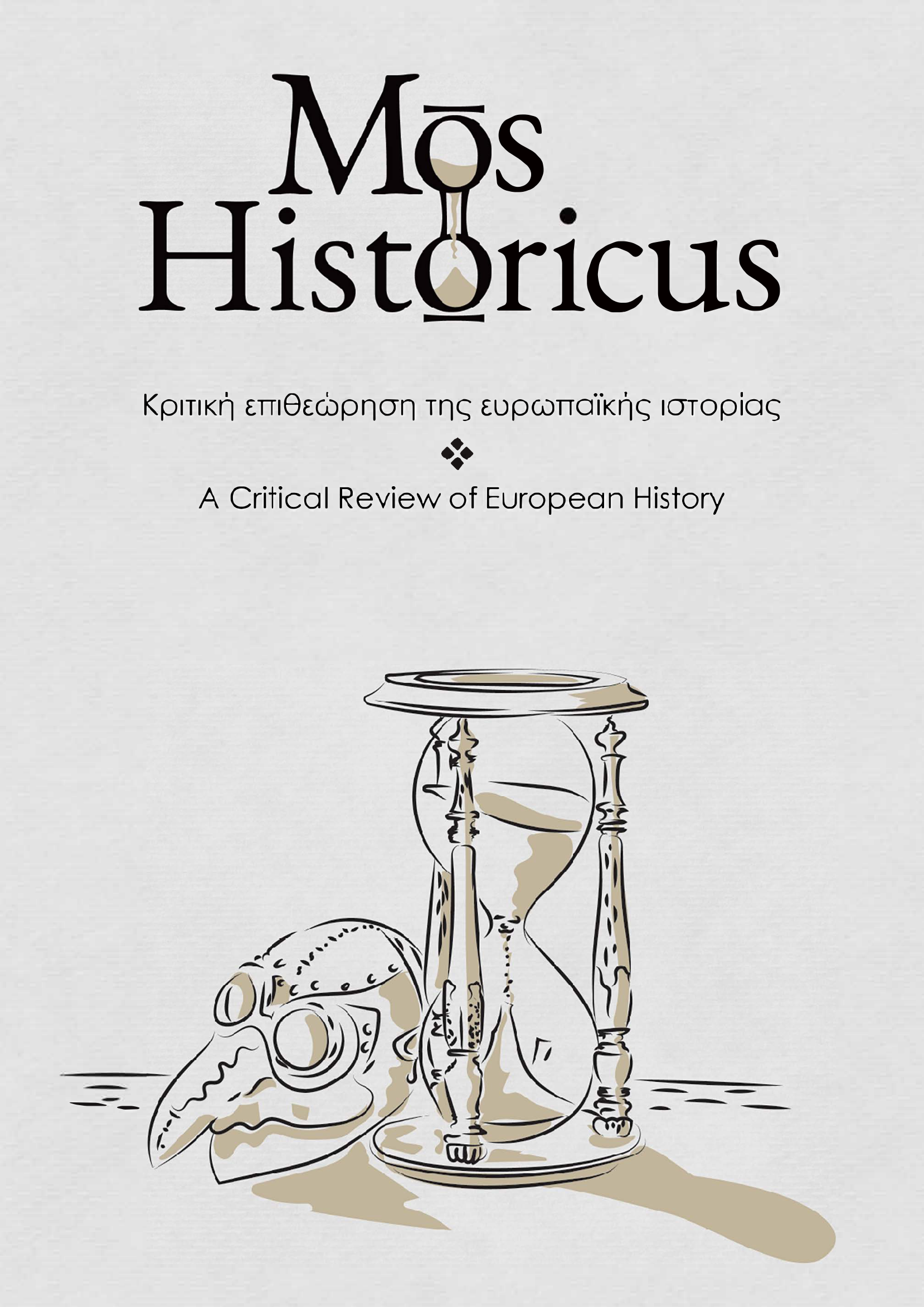Προσεγγίζοντας νέες πτυχές της παρακολούθησης στην Αγγλία του ύστερου μεσαίωνα, 1350 -1550

Περίληψη
Η παρούσα μελέτη πραγματεύεται νέες πτυχές του φαινομένου της παρακολούθησης στην Αγγλία του ύστερου μεσαίωνα. Αρχικά, προτείνονται νέες προσεγγίσεις της μελέτης του φαινομένου. Κατόπιν, παρουσιάζεται σχετική μελέτη που πραγματεύεται την πολιτική και εργασιακή παρακολούθηση στις αγγλικές πόλεις του ύστερου μεσαίωνα. Μετά τον Μαύρο Θάνατο, ευνοήθηκε η καλλιέργεια του φαινομένου. Οι ελίτ αξιοποίησαν την παρακολούθηση για την εδραίωση της εξουσίας
τους. Παράλληλα, η παρακολούθηση ήταν μέρος της καθημερινότητας. Φαίνεται πως γινόταν ανεκτή από τα κατώτερα κοινωνικά στρώματα. Ωστόσο, υπάρχουν στοιχεία που καταδεικνύουν ότι ορισμένες φορές τα λαϊκά στρώματα αντιστέκονταν στην παρακολούθηση ή την χρησιμοποιούσαν προς όφελός τους.
Λεπτομέρειες άρθρου
- Πώς να δημιουργήσετε Αναφορές
-
Χατζηαθανασίου Μ. (2024). Προσεγγίζοντας νέες πτυχές της παρακολούθησης στην Αγγλία του ύστερου μεσαίωνα, 1350 -1550. Mos Historicus: Κριτική Επιθεώρηση της Ευρωπαϊκής Ιστορίας, 2(1), 30–56. https://doi.org/10.12681/mh.38752
- Ενότητα
- Άρθρα

Αυτή η εργασία είναι αδειοδοτημένη υπό το CC Αναφορά Δημιουργού – Μη Εμπορική Χρήση 4.0.
Πολιτική για τα Πνευματικά Δικαιώματα:
Οι συγγραφείς διατηρούν τα δικαιώματα πνευματικής ιδιοκτησίας επί των άρθρων τους, παραχωρώντας στο περιοδικό Mos Historicus το δικαίωμα της πρώτης δημοσίευσης. Από τη στιγμή της δημοσίευσής τους, τα άρθρα μπορούν να χρησιμοποιηθούν ελεύθερα για μη κερδοσκοπικούς σκοπούς, χωρίς ωστόσο να υφίσταται το δικαίωμα τροποποίησης ή αναδημοσίευσής τους δίχως αναφορά στον/στη συγγραφέα και στην αρχική δημοσίευση (άδεια Creative Commons 4.0).



